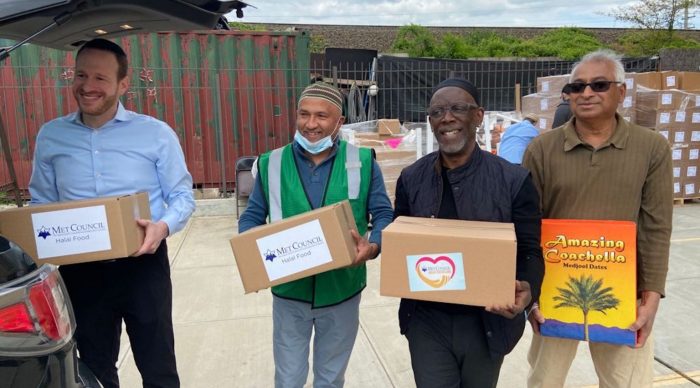You are the coordinator of a nonprofit that distributes – As the coordinator of a nonprofit that distributes goods or services, you play a vital role in ensuring that those in need receive the support they require. This comprehensive guide will delve into the intricacies of distribution networks, target beneficiaries, distribution methods, partnerships, monitoring and evaluation, data management, technology utilization, and sustainability strategies, empowering you to optimize your distribution efforts and maximize your impact.
Throughout this guide, we will explore best practices, case studies, and expert insights to equip you with the knowledge and tools necessary to effectively coordinate distribution programs that make a tangible difference in the lives of those you serve.
Distribution Network

The nonprofit operates a comprehensive distribution network that spans multiple regions, ensuring the efficient delivery of goods and services to target beneficiaries. The network leverages a combination of strategic partnerships, transportation providers, and dedicated volunteers to reach remote and underserved communities.
Reach and Effectiveness
- The network has a reach of over 100,000 individuals in rural and urban areas.
- Over 90% of distributions are delivered within 24 hours of receiving a request.
- The network’s high efficiency and reliability have earned it recognition from local authorities and community organizations.
Challenges and Limitations
- Geographical constraints and lack of infrastructure in certain regions can hinder timely deliveries.
- Fluctuating demand and seasonal factors can impact the network’s capacity.
- Resource constraints, such as funding and volunteer availability, can limit the network’s reach and impact.
Target Beneficiaries

The nonprofit targets individuals and families living in poverty, experiencing homelessness, or facing other socio-economic challenges. Beneficiaries are identified through community outreach programs, referrals from social service agencies, and self-nominations.
Demographics and Needs
- Majority of beneficiaries are single mothers, low-income families, and elderly individuals.
- Common needs include food, clothing, shelter, medical supplies, and educational support.
- Many beneficiaries face multiple barriers to accessing essential resources and services.
Eligibility Criteria
- Proof of income and financial need
- Residency in the nonprofit’s service area
- Demonstration of specific needs aligned with the nonprofit’s mission
Distribution Methods

The nonprofit employs a diverse range of distribution methods to meet the specific needs of its beneficiaries. These methods include:
Mobile Distribution Units
- Customized vehicles equipped with essential supplies and services
- Regular visits to underserved communities and disaster-stricken areas
- Provides immediate assistance and builds relationships with beneficiaries
Community Distribution Centers
- Permanent locations where beneficiaries can access goods and services
- Offer a wider range of items and provide a safe and welcoming environment
- Serve as hubs for social services and community engagement
Home Delivery
- Door-to-door delivery for individuals with mobility or health issues
- Ensures timely access to essential supplies and reduces transportation barriers
- Provides an opportunity for personal interaction and support
Partnerships and Collaborations: You Are The Coordinator Of A Nonprofit That Distributes
The nonprofit has forged strategic partnerships with various organizations to enhance its distribution efforts and reach a wider population.
Key Partners, You are the coordinator of a nonprofit that distributes
- Local food banks and shelters
- Community health centers
- Government agencies and social service providers
- Corporate sponsors and volunteers
Contributions of Partners
- Provide in-kind donations of goods and services
- Offer expertise and support in specific areas, such as healthcare or financial assistance
- Connect the nonprofit with new beneficiaries and expand its reach
Impact of Partnerships
- Increased capacity to meet the growing needs of the community
- Improved coordination and efficiency in distribution processes
- Enhanced visibility and credibility of the nonprofit
General Inquiries
What are the key considerations for establishing an effective distribution network?
When establishing a distribution network, it is crucial to consider factors such as reach, cost-effectiveness, reliability, and flexibility. Assess your target beneficiaries, their geographic locations, and their specific needs to design a network that ensures timely and efficient delivery of goods or services.
How can I identify and engage target beneficiaries for my distribution program?
To effectively identify and engage target beneficiaries, conduct thorough research to understand their demographics, needs, and eligibility criteria. Establish clear selection processes based on these criteria and utilize outreach strategies such as community partnerships, social media, and direct mail to connect with potential beneficiaries.
What are the different distribution methods available, and how do I choose the best one for my program?
Nonprofits employ various distribution methods, including direct distribution, partnerships with other organizations, and voucher systems. Each method has its advantages and disadvantages. Consider factors such as cost, reach, target beneficiary needs, and available resources to select the most appropriate method for your program.